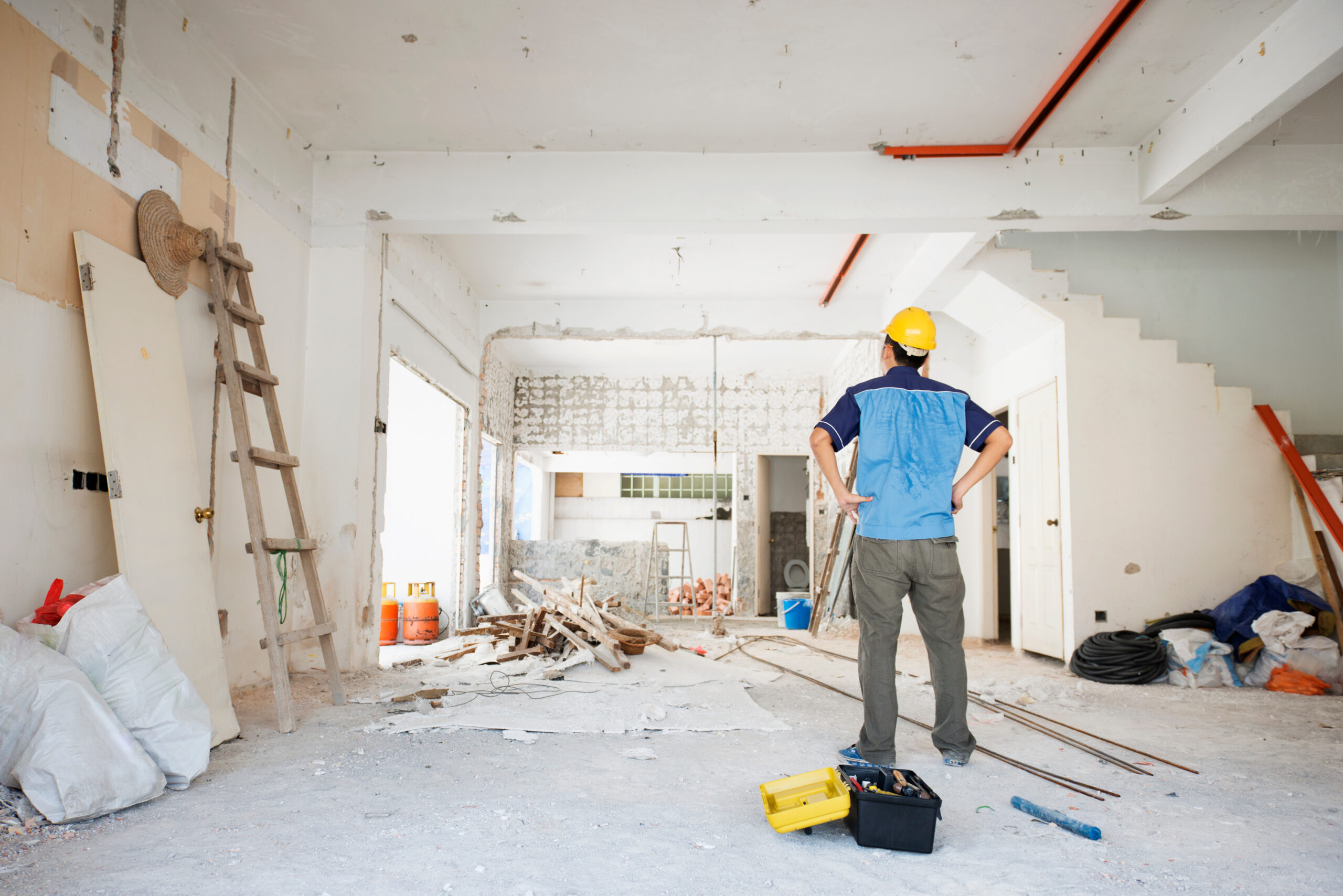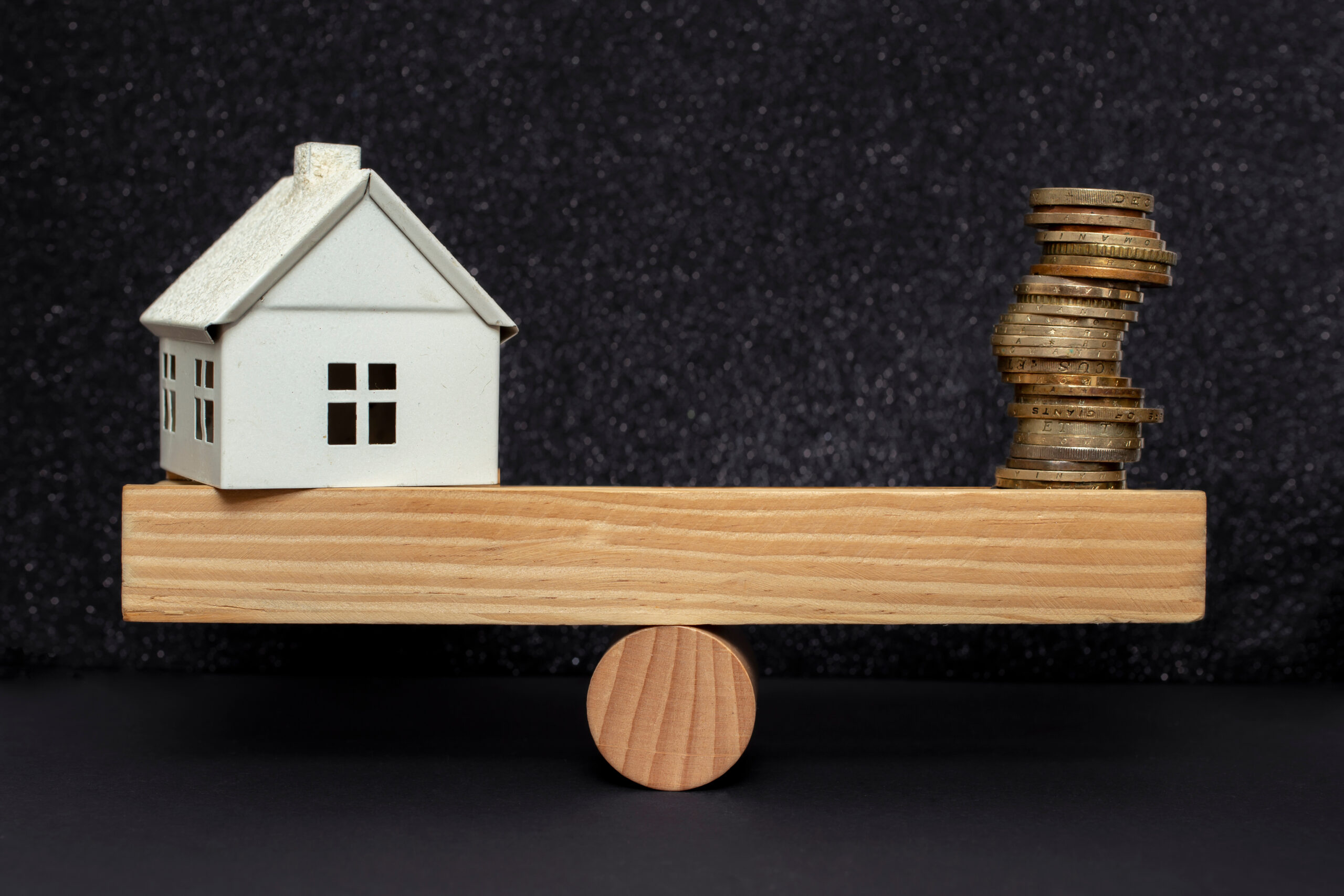Why do so many investors lose money when flipping houses, and how can you avoid the same mistakes? What strategies make flipping houses profitable instead of risky? How can disciplined planning turn flipping houses into a sustainable business?
Many investors jump into flipping houses with visions of quick profits, only to face budget overruns, overpriced renovations, and unrealistic resale expectations. The reality is that flipping houses isn’t about flashy remodels or HGTV-style transformations—it’s about running the numbers, managing contractors effectively, and sticking to conservative financial models. Without careful planning and digital workflows to track costs, holding expenses, and hidden repairs can quickly erase potential profits.
This blog breaks down why most investors fail and offers strategies for success when flipping houses. From buying right at deep discounts, to building lean by managing subcontractors directly, to planning multiple exit strategies, the path to profitability lies in discipline and preparation. By treating flipping houses as a business rather than a passion project, investors can reduce risk, protect their margins, and join the small group of professionals who consistently earn solid returns.
Flipping houses can sound glamorous, but the reality is starkly different from what you see on HGTV. In real estate investing, I’ve watched countless investors dive headfirst into their first flip, treating it like an episode of Property Brothers instead of running it like a legitimate business. This often results in miscalculated budgets, unrealistic expectations, and devastating financial losses that can wipe out years of savings in a matter of months.
In this article, we’ll explore why so many people lose money when trying to flip houses and examine the best ways to boost the chances of success while mitigating risk.
Table of Contents:
The Common Mistakes That Sink House Flips
Chasing Aesthetics Instead of ROI
The Real Rules of Successful Flipping
The Common Mistakes That Sink House Flips
According to recent data, flipping houses has been in steady decline. While high home prices are a big factor, another is the reality of high repair/renovation costs.
One of the most devastating mistakes I see repeatedly from failed flippers is the complete underestimation of project costs. Hidden repairs emerge the moment contractors start tearing into walls. What looked like a simple cosmetic flip suddenly reveals foundation issues, electrical problems that require rewiring the entire house, or plumbing that hasn’t been updated since the 1960s. I’ve seen investors budget $30,000 for renovations only to face $60,000 in actual costs when structural problems surface.
The holding costs alone can destroy profitability. Most amateur flippers forget the 8-10% buffer for commissions, carrying costs, and time on market. While renovating, you’re paying property taxes, insurance, utilities, and loan payments. The average time to flip a home in 2024 is around 166 days (5.5 months), but delays can easily extend this to eight or nine months. Every extra month of ownership typically costs $2,000 to $4,000 in carrying expenses.
It’s crucial to have a robust digital workflow for tracking these expenses. Savvy investors use project management software to monitor every cost in real-time, preventing the budget creep that kills profits. Without systematic cost tracking through a digital workflow, however, you’re essentially flying blind.
Overestimating Resale Value
Amateur flippers consistently make the fatal error of assuming their renovated home will sell at the top of the market. They cherry-pick the highest comparable sales in the neighborhood while ignoring the reality of appraisal standards and buyer expectations.
I’ve watched flippers price their properties based on wishful thinking rather than objective market analysis. They assume that because they spent $50,000 on renovations, they’ll automatically add $75,000 in value. The market doesn’t work that way. In Q1 2025, for instance, the average ROI of flipping houses was about 25%, down from 28% in Q4 2024.
Professional appraisers and lenders analyze comps differently from optimistic flippers. They look for recent sales of similar properties in similar condition, adjusting for differences in square footage, lot size, and features. If your flip is the nicest house on the block, you won’t necessarily capture premium pricing; in fact, you might have overcapitalized for the neighborhood.
You can prevent these costly mistakes by implementing a digital workflow that tracks comparable sales data, market trends, and pricing analytics. Successful flippers use automated market analysis tools to maintain realistic expectations throughout the project.
Relying on Market Timing
Too many amateur investors believe that rising home prices will eventually cover their mistakes. This dangerous assumption has burned countless flippers who bought during market peaks or held properties during downturns.
I’ve witnessed flippers who bought properties in 2022 during the peak, expecting continued appreciation to mask their overpayment and cost overruns. When markets cooled in 2023 and 2024, many found themselves underwater on projects they thought were sure winners.
The risk compounds during extended holding periods. Suppose your flip takes longer than anticipated due to permit delays, contractor issues, or market conditions. In that case, you’re exposed to interest rate fluctuations, seasonal selling patterns, and economic uncertainty that can dramatically impact your exit strategy.
Choosing the Wrong Team
The contractor decision alone can make or break your entire project. Most amateur flippers hire expensive retail contractors who mark up every subcontractor by 15-30%. This approach immediately erodes profit margins before renovation even begins.
I’ve seen flippers pay $25,000 for a kitchen remodel that could have been completed for $15,000 by managing subcontractors directly. The premium they pay for convenience and lack of oversight often exceeds their entire projected profit margin.
Worse yet, many first-time flippers fail to vet their contractors properly. They hire based on the lowest bid without checking licenses, insurance, references, or previous work quality. When problems arise (and they always do), these flippers find themselves dealing with mechanics’ liens, abandoned projects, or substandard work that requires expensive corrections.
A well-organized digital workflow for contractor management, including document storage, communication tracking, and progress monitoring, can prevent many of these disasters. Professional flippers maintain detailed digital records of all contractor communications, change orders, and progress updates. If you’re serious about flipping houses, you should do the same.
Chasing Aesthetics Instead of ROI
Perhaps the most seductive trap is over-improving properties based on personal taste rather than market demand. Flippers fall in love with high-end finishes, custom features, and designer touches that don’t translate to proportional value increases.
I’ve watched investors install $60,000 kitchens in neighborhoods where most homes sell for under $300,000. They justify these decisions by telling themselves buyers will appreciate the quality, but the math simply doesn’t work.
The disconnect between cost and value becomes apparent when these properties sit on the market for months. Buyers in moderate-income neighborhoods aren’t willing to pay premium prices for luxury finishes when they can find similar homes with standard updates for significantly less.
The Real Rules of Successful Flipping
Understanding what separates profitable flippers from those who lose money requires embracing a completely different mindset. Let’s examine the fundamentals of success.
Buy Right
Successfully flipping houses starts with the acquisition. Profit is made on the purchase, not the sale. This fundamental principle means you must buy properties at prices that allow for renovation costs, carrying expenses, and a reasonable profit margin while still pricing competitively for your target market.
The 70% rule provides a starting framework: never pay more than 70% of the after-repair value (ARV) minus renovation costs. In practice, this means that if a property will be worth $300,000 after renovations costing $50,000, your maximum purchase price should be $160,000 (70% of $300,000 = $210,000 minus $50,000 in renovations).
Conservative numbers protect you from market volatility and cost overruns. I always counsel flippers to avoid overpaying to “win” deals. If you can’t make a profit at your maximum bid, walk away. Another opportunity will emerge. You just have to demonstrate patience.
A sophisticated digital workflow helps evaluate deals systematically. Top investors use automated analysis tools that calculate potential returns based on current market data, renovation estimates, and holding costs. This removes emotional decision-making from the acquisition process.
Build Lean
Successful renovation strategies define cost efficiency without compromising essential quality. In plain language, this means focusing on improvements that maximize resale value while minimizing unnecessary expenses.
Managing subcontractors directly reduces markup costs significantly. Instead of hiring a general contractor who marks up every trade by 20-30%, successful flippers develop relationships with reliable plumbers, electricians, flooring contractors, and painters. They coordinate the work schedule themselves, ensuring efficient sequencing and avoiding costly delays.
Smart material purchasing saves substantial money. Buying in bulk, timing purchases around sales, and establishing accounts with supplier networks can reduce material costs by 15-25%. Many professional flippers maintain digital workflows for supplier relationships, tracking pricing trends and payment terms to optimize their buying power.
The key is distinguishing between cost-cutting and corner-cutting. Skimping on structural repairs, electrical work, or plumbing creates liability issues and potential safety hazards. However, choosing mid-range finishes over luxury options often provides the optimal balance of cost and market appeal.
Exit Clean
Pricing strategy often determines whether a flip sells quickly or languishes on the market, accumulating carrying costs that destroy profitability. Competitive pricing based on realistic comparable sales data immediately attracts serious buyers.
Professional flippers price properties to sell within 30-45 days maximum. They understand that each month on the market costs money in taxes, insurance, utilities, and loan payments.
Multiple exit strategies provide flexibility when market conditions change. If the flip doesn’t sell immediately, can it be rented for positive cash flow? Does the location support rental demand? Can the property be refinanced and held as a long-term investment? These alternatives prevent desperation selling at below-market prices.
How to Avoid Losing Money
Implementing systematic approaches to common failure points separates successful flippers from those who lose money. Let’s explore this notion further to see exactly what I mean.
Run the Numbers Like a Banker
Objective financial analysis eliminates emotional decision-making that destroys profitability. This means analyzing every deal using the same criteria lenders and appraisers apply to property valuation.
Comparable sales analysis should focus on properties sold within the last three to six months in similar condition and location. Adjust for differences in square footage, lot size, condition, and features. Don’t cherry-pick the highest sales; use median pricing for realistic expectations.
Include all costs in your analysis: purchase price, renovation expenses, carrying costs (taxes, insurance, utilities, loan payments), selling costs (commissions, closing costs, staging), and a contingency buffer of 10-20% for unexpected expenses. A comprehensive digital workflow tracks all these expenses in real-time, preventing budget creep that destroys margins.
Professional flippers maintain detailed financial models for each project. They update projections monthly based on actual costs and market changes. This discipline helps identify problems early when corrections are still possible.
Plan for the Worst Case
Conservative planning protects against the multitude of variables that can derail profitable flips. This means always running downside scenarios with longer hold times, higher renovation costs, and lower sale prices.
What happens if renovation costs exceed estimates by 25%? Can you still profit if the property takes six months to sell instead of two? How do interest rate increases affect your financing costs? These scenarios might seem pessimistic, but they reflect the reality of construction delays, market volatility, and unexpected repairs when flipping houses.
Smart investors maintain cash reserves equal to at least 20% of their total project cost. This buffer handles surprise expenses, extended carrying costs, or market downturns without forcing desperate decisions. The house-flipping failure rate is about 25%, meaning 1 in 4 flips do not achieve a profitable sale. Many of these failures could have been prevented with adequate contingency planning.
Any upside becomes a bonus rather than a requirement for profitability. If you need everything to go perfectly to make money, you’re taking an excessive risk that will eventually catch up to you.
Have Multiple Exit Strategies
Market flexibility prevents desperation selling, which destroys profits. Before purchasing any property, professional flippers evaluate at least three potential exit strategies based on different market scenarios.
Can the property be rented if it doesn’t sell immediately? Research rental rates for similar properties in the area. Calculate potential cash flow after debt service, taxes, insurance, and maintenance. Many successful flippers convert stalled projects into rental properties when market conditions favor holding over selling.
Does the property qualify for refinancing as a long-term investment? Consider the debt service coverage ratios, rental income potential, and neighborhood appreciation trends. Sometimes, the best decision is to keep the property and build long-term wealth through appreciation and rental income.
Wholesale options provide ultimate flexibility. If renovation costs spiral out of control or market conditions deteriorate, can you sell the property as-is to another investor? Maintaining relationships with wholesale buyers creates exit options when traditional sales aren’t viable.
A sophisticated digital workflow helps track multiple scenarios simultaneously. Professional investors use project management software to monitor market conditions, rental rates, and investor demand, adjusting their exit strategy based on real-time data.
ROI Over Aesthetics
Design decisions should maximize profit, not satisfy personal preferences or social media appeal. This fundamental shift in thinking prevents over-improvement, which destroys returns.
When flipping houses, focus on improvements that provide the highest value-to-cost ratios. Fresh paint, quality flooring, updated bathrooms, and modern kitchens consistently deliver strong returns across most markets. Granite countertops might add $5,000 in value while costing $8,000 to install: a negative return that reduces overall profitability.
Neutral, durable finishes appeal to the broadest buyer pool while minimizing maintenance concerns. Avoid trendy colors, unusual fixtures, or highly personalized features that limit market appeal. Remember, you’re not creating your dream home; you’re producing a commodity that appeals to typical buyers in your target price range.
Market research drives design decisions. Study recently sold properties in your target neighborhood. What features do successful sales have in common? Which properties sold fastest and at their asking price? This data-driven approach to renovation planning prevents costly mistakes and ensures your improvements align with buyer expectations.
Research the specific buyer demographics for your target market. First-time homebuyers prioritize different features than empty nesters or growing families. Understanding your audience helps prioritize renovation spending for maximum impact.
Conclusion
Flipping houses is fundamentally a numbers game, not a design project. Success depends entirely on disciplined buying, careful budgeting, and strategic exiting, not flashy remodels or HGTV-worthy transformations.
The investors who consistently profit from house flipping treat it like any other business: they analyze markets systematically, manage costs rigorously, and plan for multiple scenarios. They resist the temptation to over-improve properties or chase aesthetic perfection at the expense of profitability.
Most importantly, they maintain realistic expectations about returns, timelines, and market conditions. The key to joining the profitable minority lies in implementing systematic approaches to every aspect of the business. Use digital workflows to track costs, analyze deals, and manage projects. Build relationships with reliable contractors and suppliers. Maintain adequate cash reserves for unexpected expenses. Price properties competitively for quick sales.
Treat flipping like a business, and the profits will follow. Treat it like a hobby or creative outlet, and you’ll likely become another cautionary tale.




